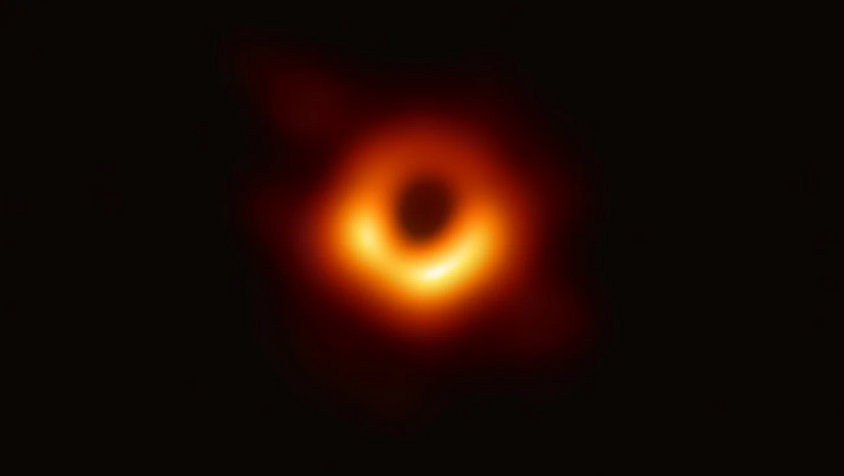Black Holes
Current reporting on the mass monsters in the universe and in the centre of our Milky Way
Black holes do not consist of matter, although they have a large mass. Therefore, until recently, they could not be observed directly, but only through the effect of their gravity on the environment: They bend space and time and have an almost irresistible attraction. The history of these exotic objects is long, as the first ideas about them appeared more than 230 years ago. But it was only in more recent times that the study of black holes really took off. In addition to amazing measurements in the center of our Milky Way, which were rewarded with the 2020 Nobel Prize in Physics for Andrea Ghez of the University of California and Reinhard Genzel of the Max Planck Institute for Extraterrestrial Physics, the Event Horizon Telescope plays an important role: The worldwide network of several radio observatories succeeded in obtaining unique images of these cosmic gravity traps.
Magnetic fields spiral around the mass monster Sagittarius A* and form up for a restart
more
When a black hole and a neutron star merge
more
First eROSITA sky-survey data release makes public the largest ever catalogue of high-energy cosmic sources
more
First observations of the radio galaxy Perseus A with the Event Horizon Telescope
more
Black hole at the centre of a galaxy in the early universe received less mass influx than expected
more
Data from the MeerKAT radio telescope reveal an object at the boundary between a black hole and a neutron star
more
Improved observations one year after the discovery image confirm the ring of light around the black hole M87* and allow new conclusions to be drawn about the physical processes involved
more
New space telescope sets out in search of extreme astrophysical X-ray sources
more
A thought experiment investigates what would happen if a tiny primordial black hole were to sit at the center of the sun
more
Observation of multiple ringdown modes in a black hole merger
more
Show more
Magnetic fields spiral around the mass monster Sagittarius A* and form up for a restart
more
When a black hole and a neutron star merge
more
First eROSITA sky-survey data release makes public the largest ever catalogue of high-energy cosmic sources
more
Black hole at the centre of a galaxy in the early universe received less mass influx than expected
more
Data from the MeerKAT radio telescope reveal an object at the boundary between a black hole and a neutron star
more
New space telescope sets out in search of extreme astrophysical X-ray sources
more
A thought experiment investigates what would happen if a tiny primordial black hole were to sit at the center of the sun
more
Precise as a clock: pulsars in the Milky Way form large-scale observatory for gravitational waves
more
New observations reveal how a powerful jet forms around a black hole
more
Large-scale observational campaign provides new insights into an assumed black hole binary at the centre of the active galaxy OJ 287
more
Show more
Reinhard Genzel of the Max Planck Institute for Extraterrestrial Physics on the first image of the galactic centre
more
The active galaxy Centaurus A has made history in radio astronomy
more
Many publications by Max Planck scientists in 2020 were of great social relevance or met with a great media response. We have selected 13 articles to present you with an overview of some noteworthy research of the year
more
The idea that black holes exist dates back to the 18th century
more
Like a huge spiral, the Milky Way floats in space
more
Interview with Reinhard Genzel on his observation of an effect of the general theory of relativity
more
This cosmic event was also observed in visible light and provides an explanation for gamma-ray bursts
more
The cosmic ripples were not only observed by the two Ligo observatories in the USA, but also the Italian detector Virgo
more
LIGO observes a signal, which was once again discovered at the Albert Einstein Institute in Hannover
more
Twin jets pinpoint the heart of an active galaxy
more
Show more
Interview with Reinhard Genzel, director at the Max Planck Institute for Extraterrestrial Physics (MPE) and architect of the 30-year programme that led to the discovery of the Schwarzschild precession around the black hole at the heart of our Milky Way. Genzel describes the general relativity effect observed by his team and how it can be used to study the galactic gravity trap.Reinhard Genzel receives the Nobel Prize for Physics 2020
Digital Story: Reinhard Genzel
more
Albert Einstein predicted their existence in the last century, but thought it would be impossible to discover them. Astronomers are now looking for them, nevertheless: gravitational waves.
more
























